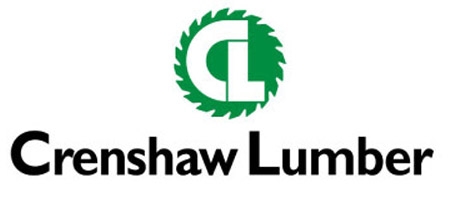
{article.name}
Social Media Links
Are You Doing Enough to Build Your Brand?
It's The Most Important Thing Your Company Will Construct

- Share this:
- Share on Facebook
- Pin on Pinterest
- Tweet on Twitter
Building a brand is as essential to a business as building character is to a person. As with character, the process involves balancing nature and nurture, reality and perception, planning and improvisation. It requires self-awareness, commitment to growth, and patience.
Design/build remodelers have taken the first step by choosing a business model that highlights their creativity, but the process doesn’t stop there—or ever. This month we learn from two remodelers who have built strong, design-centered brands.
Be About Something
You wouldn’t know it from the sophisticated, high-end projects on his company’s website, but Will Alphin started out the way most remodelers do: by taking almost any work he could get. “I was a very pragmatic guy in the early days,” says Alphin, founder of Raleigh, N.C.-based Alphin Design Build. “It was just me with a pickup truck and a table saw.”
But Alphin was drawn to remodeling for a reason, and that guided the way he developed his company. “I enjoyed making things,” he says; so when he graduated college with an architecture degree, he picked up a hammer instead of a pencil. He was committed to building sustainably, “and working on existing buildings, keeping existing neighborhoods and existing infrastructure intact, is a central component of sustainability.”
Along with his talent as a designer, Alphin’s personal principles soon began to shape his company’s brand identity. “Part of the mission for finding work became a sustainability mission,” he says. “That and quality of service.” Successful remodelers can often point to one pivotal client, and Alphin says he was fortunate in that regard too. “One of my very first projects was for a client who was very well connected in town,” he says. “That was a great reference for the first four or five years.”
Get Some Traction
Once you’ve generated that first, crucial bit of momentum, Alphin says, you can start to steer toward the kind of jobs you like. “You start to see patterns in what jobs are coming your way,” he says. For Alphin, it became clear that the best projects were clustered inside the “Beltline,” the loop of Interstate highway that encircles Raleigh. “You can drive from one side of the Beltline to the other in 30 minutes. If we’ve got three projects going on, our guys can move from one to the other easily,” he says. “It’s also where some of the nicer historic homes are. So, early on I said, ‘I’m just going to stay inside the Beltline.’ It’s not because we’re snobs; it just helps us do a better job.”
On the way to establishing his reputation as a designer, Alphin generated volume by building projects for local architects, and one of those jobs—a modernist house with dramatic butterfly roofs—proved pivotal in another way. “[The architects] didn’t approach this project from the standpoint of practicality,” Alphin says. “They approached it from what was beautiful and inspiring, and then they hired me to figure out how to build it. That was the order of priority.”
The lesson Alphin took from the experience was “to put design first and then figure out how to build it practically, economically, and efficiently. Let’s not let efficiency and economics be the first priority.” That, too, has become a defining element of his company’s brand. If a client is primarily concerned with the job being done cheaply, that’s a red flag, he says. “My realm is how well we can build it. When a client wants to talk about good design and quality first, then we’re probably going to get somewhere.”
Differentiate with Design
Design/build remodelers can build their brand identity on both good design and quality construction. That amounts to an enormous marketing advantage, because design is a powerful differentiator. All tight miter joints look alike, but your firm’s design is uniquely its own. It also makes a stronger impression on your website, Houzz, or a magazine cover.
Design/build architect Stephen Shoup may not have grasped that fact when he and a former partner, fresh out of architecture school, founded Oakland, Calif.-based building Lab in 2001, but modernist design has been a key element in defining the firm’s brand. “The identity of the firm has definitely evolved over the years,” Shoup says. “But design was always a core interest of ours; that was always in our DNA.”
At first, the firm could sell design only on small projects. “Clients would come to us and ask for a bathroom renovation; an architect would come to us with a half-house or whole-house renovation or addition,” he says.
But the balance gradually shifted, and as Shoup’s design projects grew in size and complexity, he realized that building Lab had the field of modernist design/build nearly to itself. He’s exploited that market anomaly ever since. “There was a market-driven initiative to say, ‘Look, we’re going to fill this niche,’” he says. “Isn’t that a happy coincidence, that it would be the niche that I wanted to fill anyway?”
Show Your Stuff
In the design-savvy San Francisco Bay area, Shoup says, “we sell ourselves as a design-driven design/build firm. We position ourselves as representing no compromise relative to any architect in our area.” Brave talk, but Shoup can back it up. What that takes—along with great projects—is great photos and a concerted effort to put them in front of the public.
Shoup invests in professional photography and website design, employs a half-time publicist, and spends about $6,000 a year to ensure that his projects get prominent exposure on Houzz.
But not every project, Shoup adds. “We’re deliberate in what we show, and that’s driven by our desire to do particular types of work in the future. On our website, we try to show photos of the kinds of projects we’d like to do more of.”
Controlling the visuals is key to building a design/build brand, Shoup says: “Steering toward the right projects and the right clients, having good professional photographs of your work. Make sure you photograph the kinds of projects you want to do more of, and show those. Don’t show the photos of the projects you don’t want to do more of. If you don’t want to do basements, don’t show any photos of basements.”
Source:
Bruce Snider is senior contributing editor at Custom Home and Residential Architect. He's also a frequent contributor to Remodeling.
Sign up for our Email List
Stay updated with all our latest posts, products and offers! Just enter your information below.

Comments